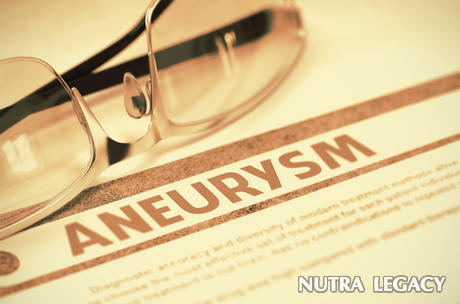Causes and Symptoms of an Aneurysm

- An aneurysm is an abnormal bulge located in the wall of an artery. If it becomes large enough it can burst and possibly cause fatal bleeding
- Symptoms of aneurysms include: blood clots, tingling in the feet and legs and deep penetrating pain. Symptoms vary depending on where the aneurysm is located
- Often high blood pressure medicine can reduce the risk of the aneurysm rupturing
What is an aneurysm? Many people have heard the term ‘aneurysm’ but are unsure exactly what it is. An aneurysm is an abnormal bulge that is located in the wall of an artery. If an aneurysm is allowed to become large enough, it will burst and cause dangerous and often times fatal bleeding in the body. Aortic aneurysms occur in the aorta. The aorta is the main artery which carries blood to the body from the heart. Abdominal aorta aneurysm occurs in the abdomen off of the aorta. No matter where the aneurysm occurs, if they are not caught in time, the person suffering from one can die. Close to 15,000 Americans each year die from them and they are the 10th most leading cause of death for men who are over the age of 50.
Unfortunately, the symptoms of an aneurysm are hard to diagnose as many aneurysms will develop and become quite large before any symptoms manifest themselves. Men between the ages of 65 to 75 years of age who have smoked throughout their lives should be checked regularly for abdominal aortic aneurysms as they are the most common types to affect this particular demographic. If an abdominal aortic aneurysm is found in enough time, it can be treated with medication or surgery. Often blood pressure medicine is used to help reduce the heart rate and reduce the risk of the aneurysm rupturing.
When you discuss aneurysms with your doctor and you ask them ‘what is an aneurysm?’ they may mention peripheral aneurysms. These are aneurysms that occur in the arteries that run off of the aorta. Usually they occur in the back of the thigh behind the knee, in the femoral artery which is the groin area, and in the carotid artery, the main artery in the neck. Symptoms of an aneurysm in these areas usually include blood clots, pain, numbness and swelling and they are not as likely to rupture as an aortic aneurysm. The blood clot, however, can still cause trouble if it breaks away from the artery wall.
Other symptoms of an aneurysm are based on where the aneurysm is located in the body and whether or not it has ruptured. They include but are not limited to: deep penetrating pain; coldness, numbness, or tingling in the feet and legs; coughing, hoarseness or trouble breathing; droopy eyelids; double vision or other changes in eyesight; dilated pupils; numbness or weakness on one side of the face or body; pulsating lump in neck, arm, or leg; painful sores on fingers or toes; leg or arm pain especially during exercise; or gangrene from blood blocking limbs.
Left unchecked anywhere in the body an aneurysm can cause a stroke. If a blood clot breaks free and travels to the brain, a stroke is imminent and can permanently damage your body, possibly with no chance of recovery or regaining use of the affected area. If you have any pain, swelling or other symptoms that are unexplainable, see your doctor immediately. While the symptoms may not be due to an aneurysm, it is better to be safe than sorry.
The information supplied in this article is not to be considered as medical advice and is for educational purposes only.
|
One Response to “Causes and Symptoms of an Aneurysm” | ||||||||||||||





 13 Jan 2009
13 Jan 2009
I have had a blood vessel pop in the ball of my foot twice in the past month. What causes that and should I be concerned? I purchased a new pair of tennis shoes which have a high section for the instep inside the shoe. The area of the shoe is pressing on the lower part of the ball of my foot and could this be causing the rupture? Thank you!July 16th, 2010 at 11:55 pm